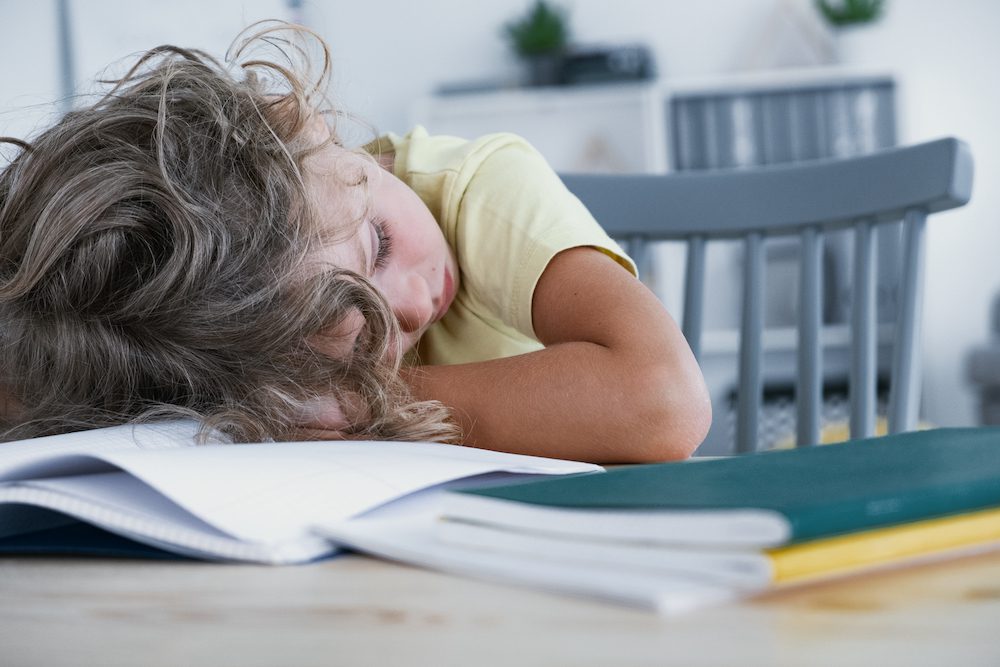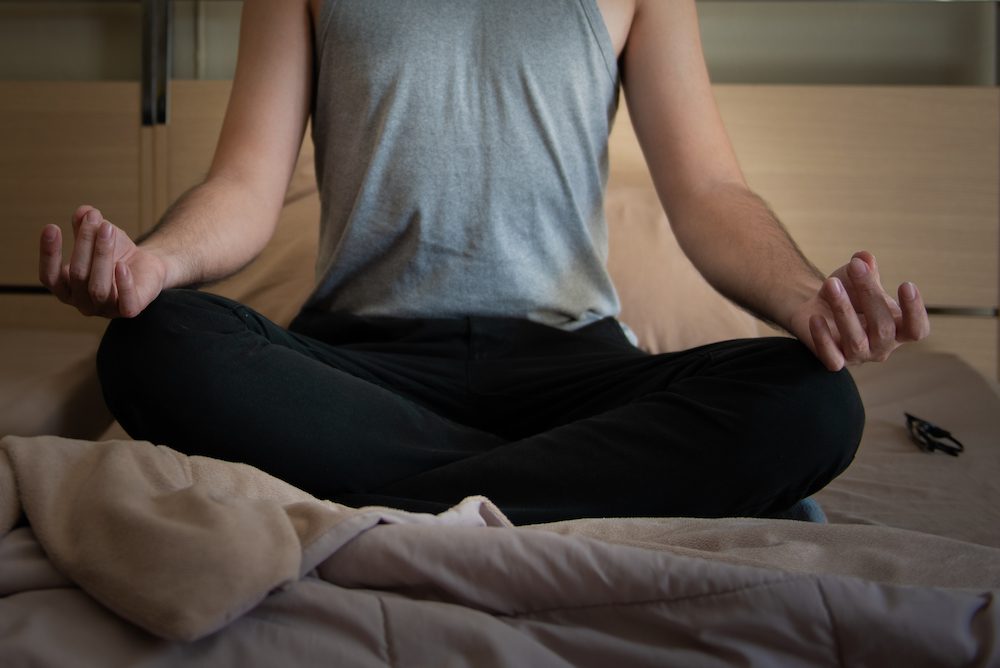Do you enjoy fall and winter?
Even as the weather gets colder in most areas, there’s so much to look forward to— holidays like Thanksgiving and Christmas, spending time with your loved ones, and preparing for the new year.
Unfortunately for many Americans, the end of the year is not just a time for gloomy weather, but gloomy thoughts as well.
Many Americans experience Seasonal Affective Disorder (SAD) as the year is closing out, and it can take a toll on mind, body, and sleep. Thankfully, these symptoms are easily treatable, even if you’ve suffered from the disorder in the past.
So let’s take a look at what seasonal affective disorder is, and how to treat it so you can get back to getting restful, rejuvenating sleep.
What is Seasonal Affective Disorder?
Seasonal affective disorder, also known as SAD or seasonal depression, is a mood disorder similar to depression. Seasonal affective disorder affects approximately 10 to 20 percent of the American population each year.
While depression can happen for a variety of reasons at any time, SAD occurs at the same time each year, typically during the fall and winter months. Seasonal depression is more than just the winter blues though— while both share symptoms of sadness and fatigue, seasonal depression can become overwhelming to the point it can interfere with your day-to-day life.
It usually resolves itself within a few months as spring approaches, but this is still a long time for you to be continuously depressed.
Symptoms of Seasonal Affective Disorder
Seasonal affective disorder shares a number of common symptoms with depression. Among them include:
- Feelings of sadness, guilt, or hopelessness
- Increased appetite— especially for carbs or junk food— and weight gain
- Social withdrawal
- Loss of interest and pleasure in activities you normally enjoy
- Decreased focus or concentration
- Fatigue, daytime sleepiness, or increased sleep (hypersomnia)
The last bullet point is something I think is especially worth noting. People with SAD are more likely to sleep too much than they are to not sleep enough.
In fact, a survey by the Journal of Psychosomatic Research found that 80 percent of participants with seasonal affective disorder complained of winter hypersomnia, versus 10 percent who complained of winter insomnia. 5 percent of participants reported experiencing both, while the remaining 5 percent experienced no sleep difficulty.
Sleeping too much is just as much a problem as not sleeping enough. Most adults require 7-9 hours of sleep per night to be at their best— if you’re consistently sleeping more or less than this, it can be a problem.
What Causes Seasonal Affective Disorder?
As the end of the year approaches and the days get shorter, many people don’t receive the sun exposure they need to get their daily vitamin D, which wakes them up and helps boost their mood. This is because the shorter days and reduced daylight during the seasonal change can cause your brain to produce too much melatonin. Melatonin is vital to getting the rest you need each night, but producing too much can keep you feeling drowsy and sluggish during the day. It can also lead to seasonal depression symptoms.
SAD may also be a result of reduced serotonin levels in the brain— serotonin helps regulate your mood, and when you don’t have enough of it, you can experience mood disorders. Reduced vitamin D levels during the darker months may also affect your serotonin levels.
Both melatonin and serotonin help your body maintain its normal rhythm— with these hormone levels in flux, your daily rhythm is disrupted, leading to behavioral, mood, and sleep changes. The risk of this increases during the fall and winter months when there is less sunlight during the day.
Sunlight is vital to keeping your circadian rhythm in alignment— when the sun comes up, your body produces less melatonin so you can wake up, and produces more as it gets dark and you get ready for bed. During the winter, the days are significantly shorter and darker than usual. Without enough light exposure during the day, you’re at risk of circadian misalignment, poor sleep, and mood disorders.
How to Treat Seasonal Affective Disorder
There are plenty of accessible options available for you to treat your seasonal affective disorder symptoms and get back to the great sleep you need. Here are 3 treatment options that I recommend.
1. Light Therapy
As I always say, light is medicine. And light is one of the best ways to treat seasonal depression.
Light therapy, also called bright light therapy or phototherapy, is a common and popular method for treating seasonal affective disorder. Light therapy also is used to treat major depressive disorder with a seasonal pattern, sleep disorders, and jet lag. Through light therapy, you provide your body with the vital light you’re missing during the darker months, helping regulate your mood.
During a light therapy session, you expose yourself directly to an artificial light source. This won’t work with just any light though— you need to use lamps or light bulbs used specifically for light therapy. These special light sources emulate natural light so you can get the benefits of sunlight even when there is none.

It’s best to do light therapy early in the morning, or right after you wake up. Most lightboxes or bulbs for light therapy are between 2500 and 10000 lux— usually the higher the lux, the shorter your sessions should be. Sessions normally last about 10 to 15 minutes. To get the most out of your treatment, the light needs to enter your eyes directly— skin exposure isn’t enough, but don’t look directly into the light. This can cause eye damage.
One study by the Journal of Affective Disorders has found that after one month, daily light therapy may reduce depressive symptoms by as much as 83 percent! The study observed 50 adults with seasonal depression, who were randomly separated into either bright light therapy treatment, or a three-week waiting list control group. The baseline depressive moods were recorded, as well as directly following treatment and at the one-month mark following treatment.
The light therapy group experienced significant improvement, and the control group saw no improvement.
While light therapy is highly beneficial to those experiencing mental health disorders or sleep disorders, it’s still possible to experience brief or mild side effects from the treatment. Some of these can include:
- Eyestrain
- Nausea
- Headache
- Irritability
However, these go away on their own and can even be prevented by reducing your treatment time, taking breaks during the session, or sitting further from your light source. However, if the side effects persist, get in touch with your doctor
2. Cognitive Behavioral Therapy
Cognitive behavioral therapy, also known as CBT, is a short-term behavioral treatment that helps you stop the cycle of negative thinking, cope with your anxieties in a healthy way, and get back to sleeping better.
For example, thanks to your SAD symptoms, you may go about your day with a negative mindset and accentuate any negative events that have happened, further affecting your mood in a negative way and building your anxiety.
CBT works by adjusting your thoughts to influence your emotions and behavior in a healthier way, in a process called cognitive restructuring. So by changing your line of thinking and how you assess any situations that arise, you can manage your anxiety and control your symptoms. This is especially important as you’re getting ready for bed, since a racing and anxious mind can make it much harder to fall asleep quickly, and can negatively affect your sleep quality.
Another form of cognitive behavioral therapy comes in the form of journaling. Writing down your thoughts and feelings, good or bad, in a journal helps you process your emotions in a healthy and productive way. You can vent your worries or frustrations, keep track of good things that happened during the day, whatever you want! As long as you’re taking your time to make sense of your thoughts, you can make it much easier to fall asleep at night.
3. Try Relaxation Techniques Before Bedtime
Relaxation techniques are simple practices you can do to relieve stress and unwind. They’re also hugely beneficial to a good night’s sleep. A few other benefits offered by relaxation techniques include:
- Improved mood
- Reduced aches or muscle tension
- Reduced blood pressure
- Better digestive health
Here are a few relaxation techniques that I recommend:
- Yoga: Yoga is great for practicing mindfulness and helping you become more in-tune with your body.
- Meditation: Meditation allows you to “pause” what’s going on around you and enter your own state of calm and serenity.
- Breathing Exercises: We all know the power of a deep, calming breath. This takes it one step further by repeating these deep calming breaths to help encourage relaxation, clear your mind, and promote restfulness.
When To Seek Help
Remember, it’s normal to experience a low mood every so often, especially during the winter months. Even while seeking treatment for winter depression or mental illness, it’s still possible for you to feel sad, hopeless, or overwhelmed. But it’s important to understand that you are not alone and there will always be someone out there to help you.
If you continue to struggle with mental disorders like SAD, depression, anxiety, or bipolar disorder, consult your doctor or a mental health professional.
Seasonal affective disorder (SAD) is a common mood disorder, but it doesn’t have to control your life and ruin your sleep. If you get the winter blues each year, give these solutions a try. They can help you get back to enjoying all the wonderful experiences this time of year has to offer.
References
Ask the Sleep Doctor
Have questions about sleep? Submit them here! We use your questions to help us decide topics for future articles, videos, and newsletters. We try to answer as many questions as possible. You can also send us an email. Please note, we cannot provide specific medical advice, and always recommend you contact your doctor for any medical matters.







